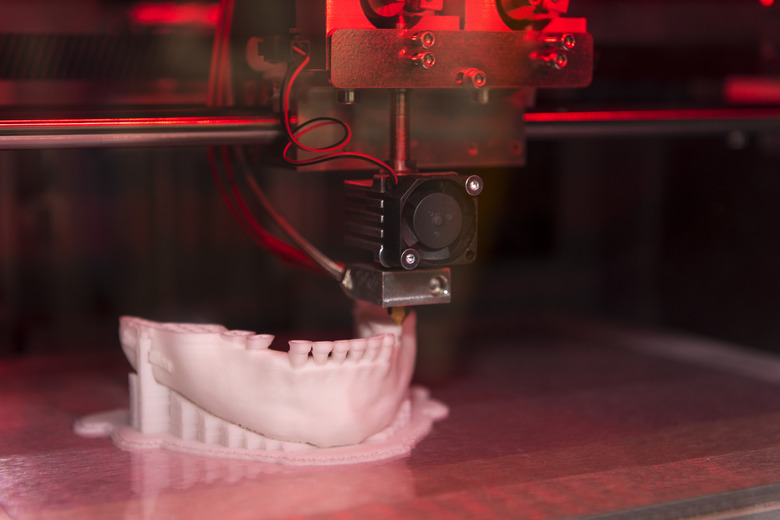3-D Printing Goes Cellular
While 3-D printing still feels like new technology, yet it's already set to revolutionize the way people manufacture and develop products. The first affordable 3-D printed cars may appear by 2019, and some people have already created affordable 3-D printed homes out of mortar.
This new technology also promises to revolutionize medicine. Highly specialized medical 3-D printing not only helps scientists create realistic tissues on which to do medical experiments, but 3-D printed tissues themselves could be part of medical treatments in the near future.
Advances in Medical 3-D Printing
Advances in Medical 3-D Printing
Most of the 3-D printed medical technology so far involves printed non-biological material — like prosthetics — which are much less complex than actual cells and tissues. Because 3-D printing offers a relatively low-cost process, manufacturers can make 3-D printed prosthetics more affordable without sacrificing quality. Scientists have also developed 3-D printed implants, like cranial plates, and medical instruments to help surgeons perform increasingly complex surgeries.
The Future: Printed Cells and Tissues
The Future: Printed Cells and Tissues
Machines printing biological tissues may sound like science fiction, but it's becoming a reality now, thanks to advancements in printing technology. Scientists can now print tissues with functional "blood vessels." The printed vessels, which could pump blood the same as human blood vessels, could pave the way for eventually printing organs and tissues that could link to a patient's existing blood supply. Researchers have also developed methods to 3-D print heart valves and bone tissue.
But just because a 3-D printed tissue looks like human tissue, it doesn't mean that it behaves like it. Which is why it's so exciting that scientists now use 3-D printing to create tissues designed to act like their biological counterparts. These new printing techniques, outlined in "Advanced Functional Materials" in 2018, uses ink to create an environment like the body. For example, skin cells, printed with ink that mimics the biological environment of skin tissue, then allows the 3-D printed tissue to act like real skin.
What Are the Implications of 3-D Printed Tissue?
What Are the Implications of 3-D Printed Tissue?
The ability to print tissue that acts like real human tissue has the potential to radically change medical research. Currently, the earliest stages of medical research often involve "transformed" cells — regular cells genetically altered to make them easier to experiment on, since tests involving actual human tissues are expensive and costly. Three-dimensional printing could make testing on human-like tissue more accessible, so results gleaned from the earliest stages of research might be more applicable to human medicine.
This type of printing also offers potential for better organ and tissue transplants and grafts as well. The ability to print functional human-like tissues could make transplants more accessible and cut down on lengthy waits on donation lists, while printed bone or skin tissue could make grafts more patient-friendly. While some of these technologies may take years for full development, they hint at the future of medicine — one where fully functional grafts and transplants could be available to all.
Cite This Article
MLA
Tremblay, Sylvie. "3-D Printing Goes Cellular" sciencing.com, https://www.sciencing.com/3-d-printing-goes-cellular-13710352/. 29 March 2018.
APA
Tremblay, Sylvie. (2018, March 29). 3-D Printing Goes Cellular. sciencing.com. Retrieved from https://www.sciencing.com/3-d-printing-goes-cellular-13710352/
Chicago
Tremblay, Sylvie. 3-D Printing Goes Cellular last modified March 24, 2022. https://www.sciencing.com/3-d-printing-goes-cellular-13710352/
